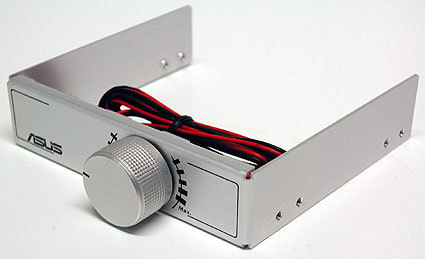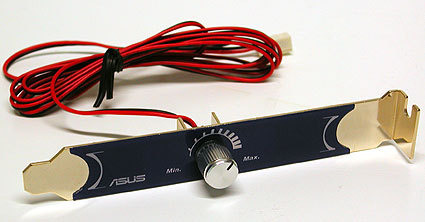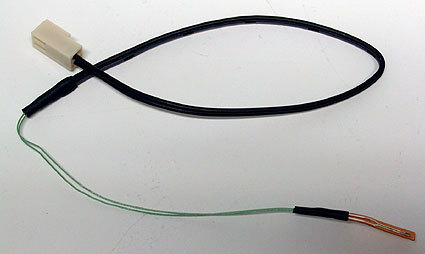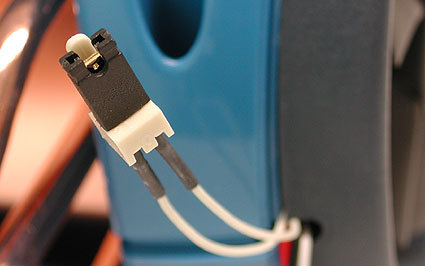Asus' Big, Bad StarIce Cooler
The Fan Control Is Awash With Options
Asus had some fresh ideas for fan control, although one drawback right off the bat is that there is no 4-pin connector for PWM mode on the new LGA775 motherboards. Thus, complete automatic board control is not possible. But Asus has integrated other options for fan control.
Besides the regular 3-pin connector for the motherboard, the Asus cooler has another two-pin connector for a fan controller. If the motherboard takes over control (many have the Q-Fan feature in the BIOS), a jumper is placed on the connector to deactivate internal fan control.
There are several options for fan control. Manual control using a potentiometer is done with a front panel (3.5" slot) or via a slot panel on the back of the computer.
Asus used its head when designing the front panel, which has several screw holes and a 9-cm long side plate to prevent slipping in cases with drive cages or rail systems. At 14 mm, the length of the knob is a perfect fit in cases with a front door, too. The test setup using the widely-available Chieftec 601 was successful.
Front panel for mounting in a 3.5" slot
A slot panel can be used if there's no room at the front
The third option comprises an automatic control via a temperature sensor
Get Tom's Hardware's best news and in-depth reviews, straight to your inbox.
Fan speed can be adjusted via manual controls as well as by temperature. For the latter, Asus provides a flat sensor, which is fixed to the cooler's copper surface. The manufacturer urges against positioning the sensor between the CPU and heatsink - advice that should definitely be heeded. Otherwise, heat conduction to the cooler is no longer possible, which in the worst case could result in damage to CPU and motherboard.
Remove before flight: If a potentiometer or the sensor is used for cooler control, remove the jumper...
... and connect the controller instead
Current page: The Fan Control Is Awash With Options
Prev Page Installation, Continued Next Page Benchmarks



